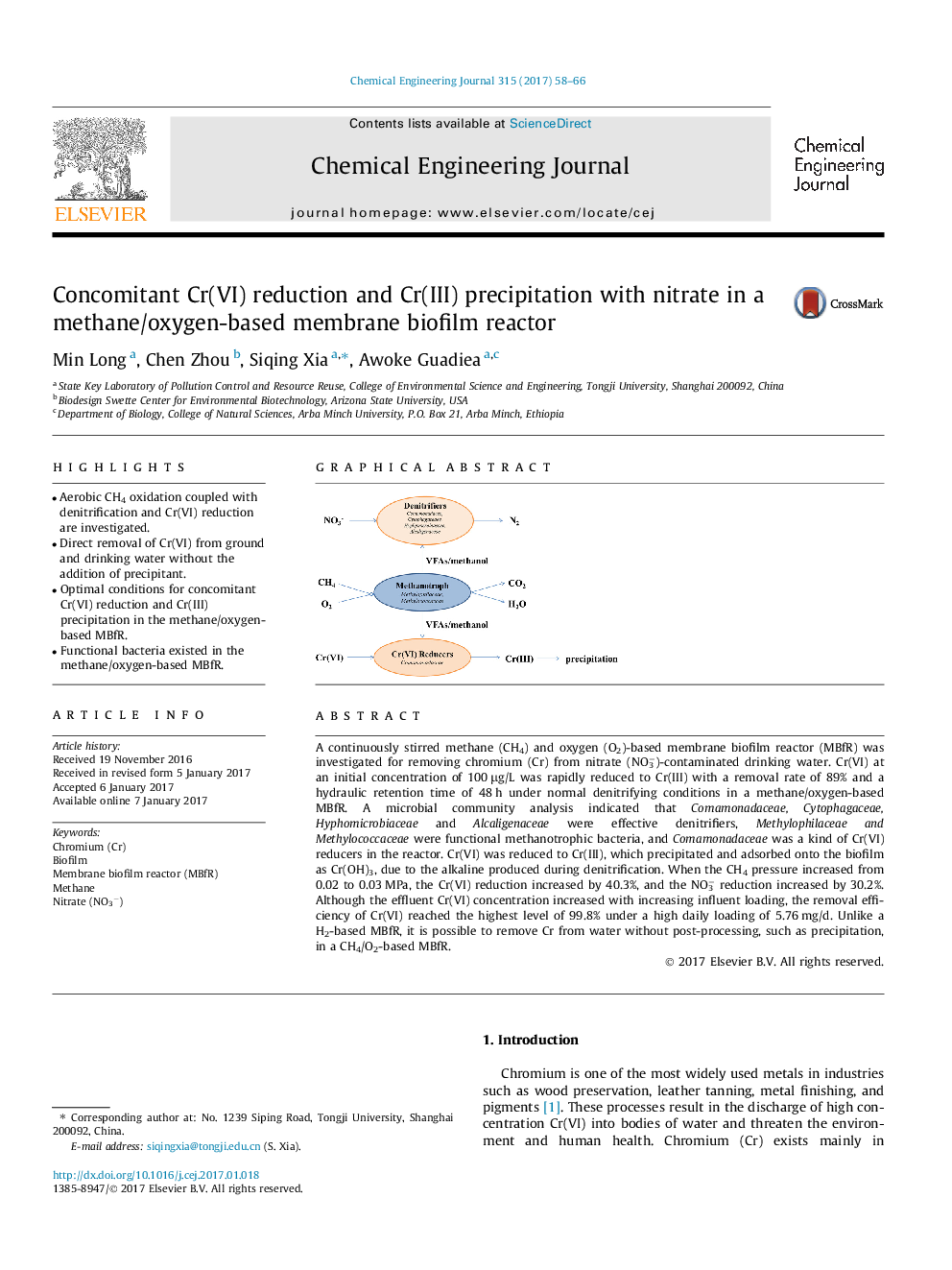| Article ID | Journal | Published Year | Pages | File Type |
|---|---|---|---|---|
| 6466298 | Chemical Engineering Journal | 2017 | 9 Pages |
â¢Aerobic CH4 oxidation coupled with denitrification and Cr(VI) reduction are investigated.â¢Direct removal of Cr(VI) from ground and drinking water without the addition of precipitant.â¢Optimal conditions for concomitant Cr(VI) reduction and Cr(III) precipitation in the methane/oxygen-based MBfR.â¢Functional bacteria existed in the methane/oxygen-based MBfR.
A continuously stirred methane (CH4) and oxygen (O2)-based membrane biofilm reactor (MBfR) was investigated for removing chromium (Cr) from nitrate (NO3â)-contaminated drinking water. Cr(VI) at an initial concentration of 100 μg/L was rapidly reduced to Cr(III) with a removal rate of 89% and a hydraulic retention time of 48 h under normal denitrifying conditions in a methane/oxygen-based MBfR. A microbial community analysis indicated that Comamonadaceae, Cytophagaceae, Hyphomicrobiaceae and Alcaligenaceae were effective denitrifiers, Methylophilaceae and Methylococcaceae were functional methanotrophic bacteria, and Comamonadaceae was a kind of Cr(VI) reducers in the reactor. Cr(VI) was reduced to Cr(III), which precipitated and adsorbed onto the biofilm as Cr(OH)3, due to the alkaline produced during denitrification. When the CH4 pressure increased from 0.02 to 0.03 MPa, the Cr(VI) reduction increased by 40.3%, and the NO3â reduction increased by 30.2%. Although the effluent Cr(VI) concentration increased with increasing influent loading, the removal efficiency of Cr(VI) reached the highest level of 99.8% under a high daily loading of 5.76 mg/d. Unlike a H2-based MBfR, it is possible to remove Cr from water without post-processing, such as precipitation, in a CH4/O2-based MBfR.
Graphical abstractDownload high-res image (109KB)Download full-size image
